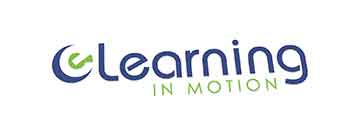In today’s digital age, eLearning has become an indispensable component of education and training. With the rise of remote learning and the need for flexible learning solutions, it’s crucial to understand the difference between eLearning software and eLearning authoring tools. While they share similarities, they serve distinct purposes in the realm of digital learning. In this blog post, we will delve into the definitions of both eLearning software and eLearning authoring tools, highlighting their unique functionalities and providing examples of scenarios where one might be more suitable than the other.
Table of Contents
- Defining eLearning Software
- Defining eLearning Authoring Tools
- When to Use eLearning Software
- When to Use eLearning Authoring Tools
- Conclusion
Defining eLearning Software
eLearning software refers to a comprehensive system that enables the creation, management, and delivery of online learning materials and courses. It encompasses a wide range of tools, functionalities, and features designed to facilitate the entire eLearning process. This software serves as a platform that integrates various components, including course management, learner tracking, assessments, multimedia integration, and collaboration tools.
eLearning software typically offers a centralized learning management system (LMS) that acts as a repository for course content, learner data, and administrative controls. It allows educators, trainers, and instructional designers to develop and deliver engaging digital learning experiences while tracking learner progress and performance.
eLearning software can be either cloud-based or installed on local servers, depending on the specific needs of the organization or institution. Some well-known examples of eLearning software include Moodle, Blackboard, Canvas, and Adobe Captivate Prime.
Defining eLearning Authoring Tools
On the other hand, eLearning authoring tools are specialized software applications that focus on content creation for eLearning courses. These tools empower instructional designers and subject matter experts (SMEs) to develop interactive and engaging learning materials without extensive programming knowledge. eLearning authoring tools typically offer a user-friendly interface, pre-built templates, multimedia integration capabilities, and options for customization.
These tools allow users to create course content in various formats, such as interactive presentations, quizzes, simulations, videos, and more. They often incorporate features for adding multimedia elements, interactivities, branching scenarios, and assessments. Examples of popular eLearning authoring tools include Articulate Storyline, Adobe Captivate, Lectora Inspire, and Camtasia.
When to Use eLearning Software
- Large-Scale Course Management: eLearning software is ideal for organizations or institutions that require a centralized system for managing and delivering numerous courses simultaneously. It provides robust administrative controls, learner tracking, and reporting functionalities, making it suitable for universities, corporate training departments, and online learning platforms.
- Learner Management and Tracking: If your focus is on monitoring and analyzing learner progress, performance, and engagement, eLearning software offers comprehensive learner management features. It enables educators to track individual learner achievements, assess the effectiveness of courses, and identify areas for improvement.
- Collaboration and Communication: eLearning software often includes communication and collaboration tools, allowing learners and instructors to interact and engage in discussions, group projects, and peer-to-peer learning. This functionality fosters a sense of community and enhances the overall learning experience.
- Comprehensive Reporting and Analytics: For organizations or institutions that require detailed analytics and reporting on course completion rates, assessment scores, and learner feedback, eLearning software offers advanced reporting capabilities. This data helps in identifying trends, evaluating course effectiveness, and making data-driven decisions.
When to Use eLearning Authoring Tools
- Content Creation and Customization: If your primary focus is on creating interactive and customized course content, eLearning authoring tools are the way to go. These tools offer flexibility and control over the design and development of eLearning materials. They allow you to incorporate multimedia elements, interactivities, and assessments tailored to specific learning objectives.
- SME Involvement: eLearning authoring tools empower subject matter experts with the ability to create content directly. SMEs often possess deep domain knowledge but may lack extensive technical skills. Authoring tools with intuitive interfaces and pre-built templates enable SMEs to develop engaging eLearning materials with ease.
- Rapid Development: When time is of the essence, eLearning authoring tools shine in their ability to streamline the course development process. These tools offer reusable templates, drag-and-drop functionality, and built-in interactivities, enabling instructional designers to create courses efficiently and cost-effectively.
- Content Updates and Iterative Development: eLearning authoring tools facilitate iterative development, allowing for quick updates and revisions to course content. As industry trends and best practices evolve, authoring tools enable instructional designers to adapt and refine their materials to meet changing needs.
Conclusion
In the world of eLearning, understanding the distinction between eLearning software and eLearning authoring tools is vital. While eLearning software provides a comprehensive platform for managing and delivering courses, eLearning authoring tools focus on content creation and customization. The choice between these two tools depends on the specific needs of your organization or institution, the scale of course management required, the level of customization desired, and the involvement of subject matter experts. By leveraging the strengths of each tool, educators, trainers, and instructional designers can create effective and engaging eLearning experiences that meet the evolving needs of learners in the digital age.
Thank you for reading this post. If you would like to receive exclusive content, use the form on this page to sign up to our mail list. Please, share this post. Like this post. Leave a comment below.


